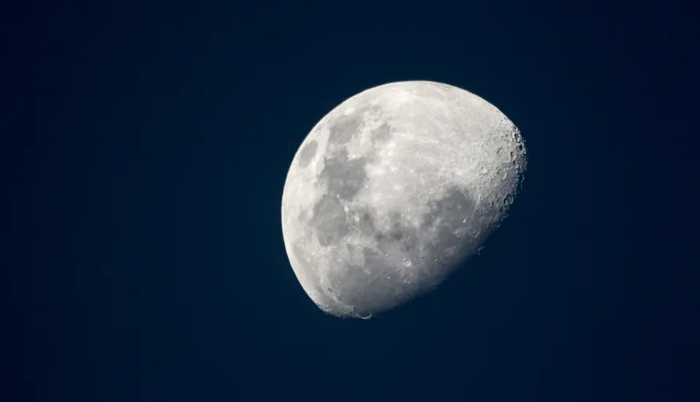![]() Home > Space & Science
Home > Space & Science
Water Trapped In Tiny Glass Beads On The Moon Could Hydrate Future Settlements

ElOjoTorpe via Getty Images
![]() March 28th, 2023 | 10:09 AM |
March 28th, 2023 | 10:09 AM | ![]() 422 views
422 views
WASHINGTON, UNITED STATES
Now they just need to figure out how to extract it.
China’s Chang’e 5 rover has found tiny glass beads containing water in an impact crater on the Moon. Samples collected from a 2020 mission found beads with water content as high as 2,000 parts per million (PPM). Given the prevalence of these glass spheres on the lunar surface, there may be enough to provide 71 trillion gallons of water.
Some beads formed when asteroids collided with the Moon millions of years ago, while others came from ancient volcanoes. Scientists believe the water originated from a chemical reaction when hydrogen ions emitted from the sun — transported to the lunar surface from solar winds — combined with oxygen atoms inside the beads. The water-filled beads are tiny, ranging from “tens of micrometers to a few millimeters.” Still, there are enough on the Moon’s surface to (theoretically) supply an estimated 270 trillion kilograms of water — enough to fill 100 million Olympic-sized swimming pools.
However, scientists haven’t yet figured out how to collect them, and they would need to heat them to around 212 degrees Fahrenheit to extract water. Still, they could be a resource for future lunar settlements, where astronauts could use water for drinking, bathing, cooking, cleaning and even producing rocket fuel.
Scientists believe other moons in our Solar System may have similar beads. “Our direct measurements of this surface reservoir of lunar water show that impact glass beads can store substantial quantities of solar wind-derived water on the moon and suggest that impact glass may be water reservoirs on other airless bodies,” the study’s authors wrote. “The presence of water, stored in impact glass beads, is consistent with the remote detection of water at lower-latitude regions of the Moon, Vesta and Mercury. Our findings indicate that the impact glasses on the surface of Solar System airless bodies are capable of storing solar wind-derived water and releasing it to space.”
The glass beads aren’t our first glimpse at water on the Moon. In 2009, NASA crashed a probe into the Cabeus crater that led to water detection; in 2018, NASA found direct evidence of ice deposits in the Moon’s permanently shadowed craters on its north and south poles. NASA and China / Russia plan to put lunar bases at the Moon’s South Pole within the next decade; the competing initiatives both hope to have inhabitable bases ready by the early-to-mid-2030s.
Source:
courtesy of ENGADGET
by Will Shanklin
If you have any stories or news that you would like to share with the global online community, please feel free to share it with us by contacting us directly at [email protected]